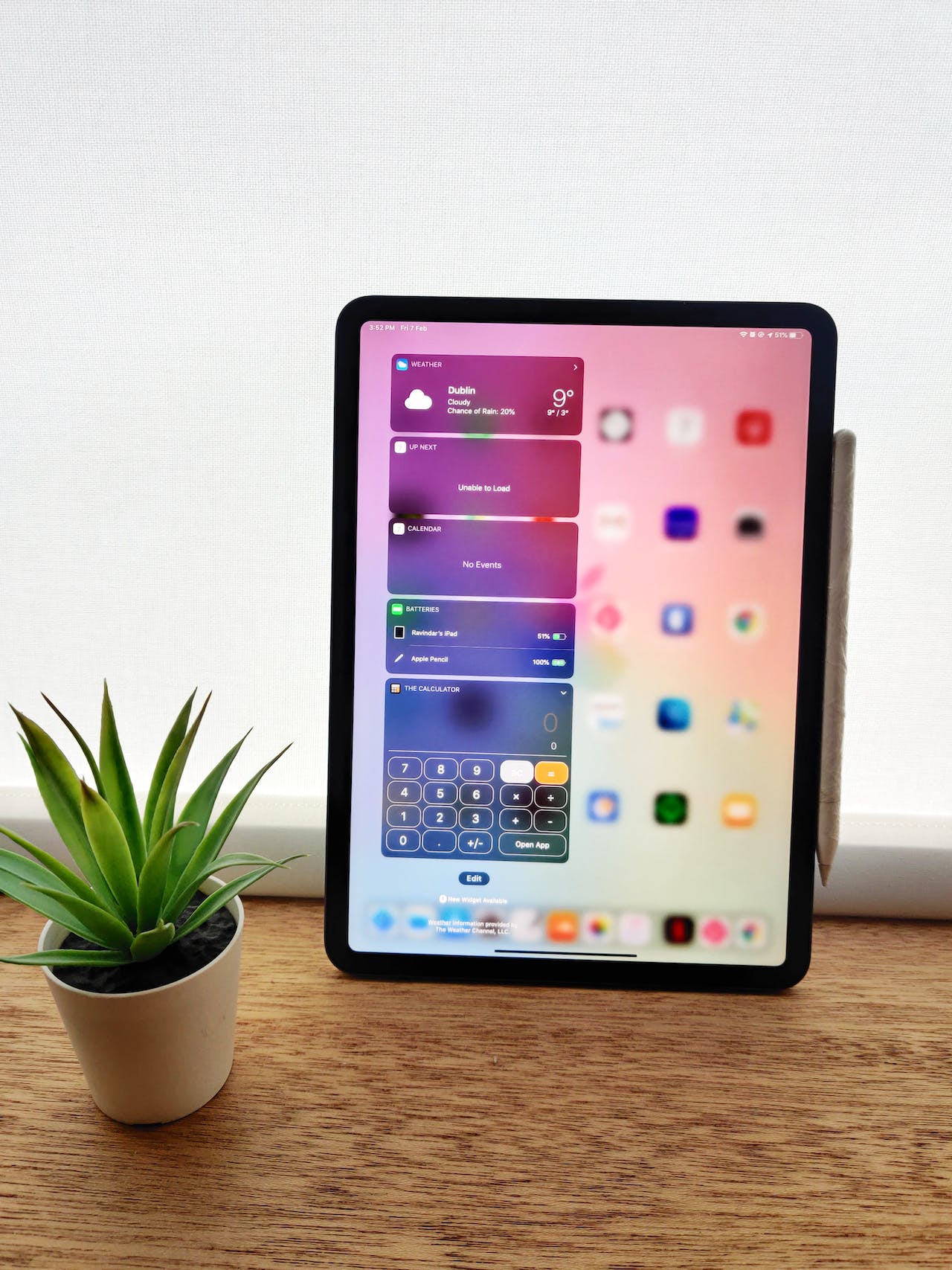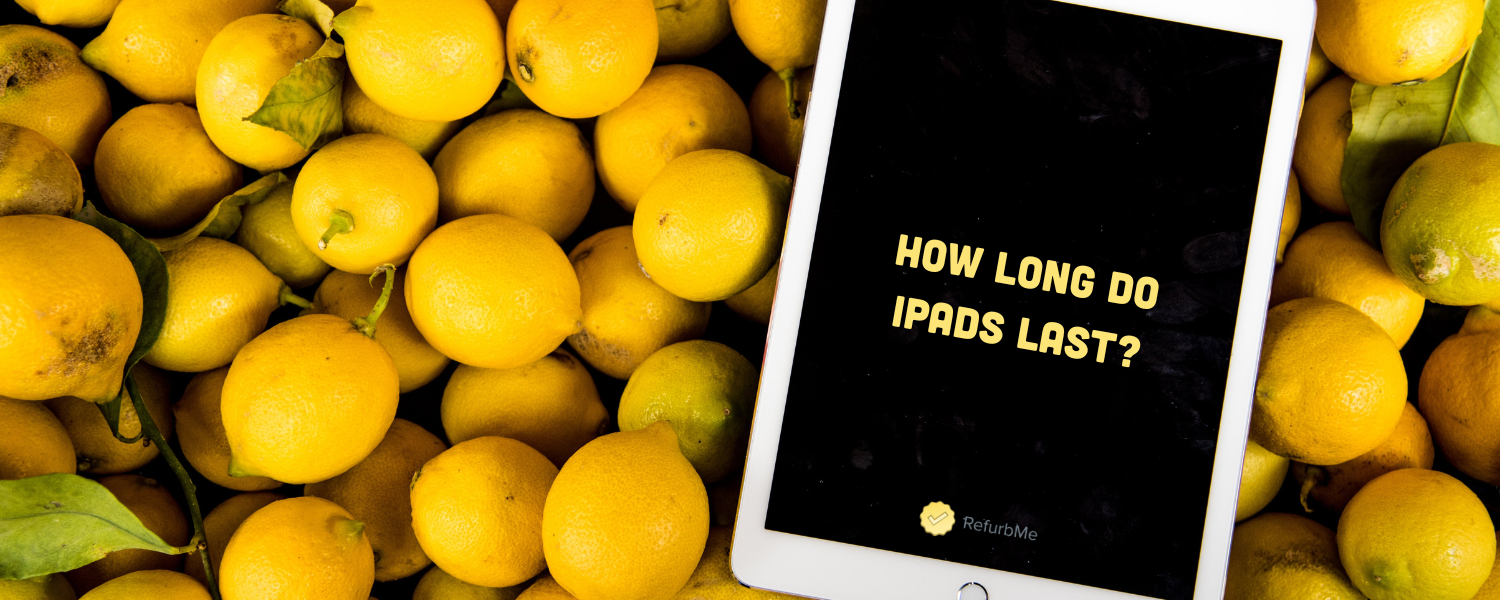Are you curious about how long iPads last? Understanding the lifespan of our tablets and other tech devices is more important than ever. We don’t want to replace them before we thought, and it’s always beneficial to know how much our current iPad has left. In this blog post, we’ll explore the factors influencing how long iPads last, offering valuable insights for current and prospective iPad owners.
Table of contents
Key factors of the iPad lifespan
The question of how long do iPads last encompasses various elements. Primarily, the build quality of iPads sets a high standard in the industry. Apple designs its devices to endure, using quality materials and robust construction methods.
However, the longevity of these devices is not solely dependent on their build. The way users handle and maintain their iPads plays a significant role.
Regular usage patterns significantly impact an iPad’s lifespan. Devices used intensively for gaming or video editing will typically experience quicker battery degradation and potentially more wear and tear compared to those used more lightly for browsing or reading.
Another critical aspect is maintenance. Regular cleaning, avoiding overcharging, and keeping the device away from extreme temperatures help prolong its life.
Software updates also play a crucial role. While Apple has been known for supporting its devices with iOS updates for several years, an outdated iPad may become incompatible with newer software and applications, reducing its functional lifespan.
Additionally, iPads may slow down or become less responsive as they age, especially when running newer, more demanding applications.

How long can iPads’ battery last?
The battery life of an iPad is a pivotal factor in determining its overall lifespan. iPad batteries are designed to retain a significant portion of their original capacity even after numerous charge cycles. However, this capacity diminishes over time.
An iPad’s battery is expected to hold up to 80% of its capacity after 500 complete charge cycles, which, under typical usage conditions, can translate to several years of service.
Ultimately, the overall battery lifespan can vary greatly depending on user habits. Intensive tasks like video streaming, gaming, or using augmented reality applications consume more battery life, leading to more frequent charging cycles and potentially faster battery degradation. Conversely, lighter usage patterns can extend both the single-charge life and overall battery health.
Environmental factors like exposing the device to high temperatures can also accelerate battery degradation. Users can monitor their iPad’s battery health through the settings, providing insights into when a battery replacement might be necessary. This replacement can significantly extend the usable life of the device, ensuring that it remains functional and efficient for years to come.
👉 Learn more: How to Save Battery on iPad: 30 Easy Tips
How long does Apple support iPads?
Historically, Apple has a strong track record of providing software updates to iPads for a considerable period.
On average, iPads receive iPadOS updates about 5 to 7 years after release. This extended support period is significantly longer than what’s offered by many other tablet manufacturers.
The updates provided by Apple include not just new features but also crucial security patches and performance enhancements. These updates ensure that iPads remain secure from vulnerabilities and can continue to run newer applications more effectively.
Notably, the cessation of software updates does not immediately render an iPad obsolete. An iPad can continue to function with the last update it received, but over time, it may not be able to run newer applications or services and won’t receive security updates.

When should you replace your iPad?
Deciding when to replace your iPad can be a nuanced decision, influenced by various factors. It’s not just about how long iPads last but also how well they continue to meet your needs. Here are key considerations to help you determine the right time for an upgrade:
1. Performance issues
If your iPad is consistently sluggish, crashes frequently, or struggles with basic tasks, it might be time for a replacement. Performance degradation can be due to outdated hardware struggling with newer software demands or cumulative wear and tear.
2. Reduced battery life
When your iPad’s battery life significantly reduces, even after optimizing settings and reducing usage, it could indicate that the battery is nearing the end of its useful life. While battery replacements are an option, the cost and effort might sometimes point toward getting a new device, especially if other components are worn out.
3. Lack of software updates
An important aspect to consider is whether your iPad still receives iOS updates. Once Apple stops supporting an iPad model with updates, it won’t get the latest features or security patches, which could leave it vulnerable and less functional. This lack of support can indicate that it’s time to consider an upgrade.
4. Changing needs
Your needs might have evolved since you first purchased your iPad. If you find that your current model no longer suits your requirements – perhaps you need more storage, a more powerful processor for professional work, or better compatibility with other devices – upgrading to a newer model could be wise.
5. Physical damage
Sometimes, deciding to replace an iPad is straightforward, such as when it has sustained significant physical damage. If the repair cost is prohibitive, or if the damage affects the device’s usability (like a severely cracked screen or malfunctioning buttons), replacing it might be the only viable option.
6. Cost-benefit analysis
Evaluate the cost of keeping your current iPad versus replacing it. Consider factors like repair costs, lost productivity due to performance issues, and the benefits of new features and improved performance in newer models. Sometimes, investing in a new iPad might be more economical in the long run.
7. Environmental considerations
If you’re environmentally conscious, you might weigh the decision to replace your iPad against the environmental impact of purchasing a new device. Opting for refurbished models, like those available on RefurbMe, can be a more sustainable choice, offering the benefits of a new device without the same environmental footprint.
👉 Learn more: What To Do With an Old iPad? 10 Clever Ways To Reuse It
The life cycle of an iPad
In 2023 alone, Apple sold around 49.5 million iPads. With each passing iPad generation—the 10th, the current one—older iPads go extinct. Apple stops upgrading them to the latest iOS, and app developers drop support.
Due to the constant upgrades and consumer demands, the Apple iPad is essentially a cradle-to-grave product. With new releases coming out, previous editions of the iPad have lost much popularity. The old iPads find themselves one way or the other in the landfill. Placing them in landfills runs the risk of toxic materials spilling and potentially causing harm to the environment and mucking up the environment for living beings.
Although Apple is expanding the use of recycled materials across its products, this cradle-to-grave usage still exists. However, Apple has begun to strive towards cradle-to-cradle products, collecting old products and sending them to India for disassembling or to recover materials that can be recycled and reused in the production of another device, boosting the circular economy in the process.
In fact, Apple will use 100 percent recycled cobalt in batteries by 2025, further expanding the use of recycled materials.
How is an iPad made?
The journey of an iPad, from the raw materials to the finished product you hold in your hands, is a complex and fascinating one. Here’s a glimpse into the key stages involved:
1. Sourcing the essentials
- Raw materials: The iPad’s components require a variety of raw materials, including aluminum for the casing, silicon for the chips, and lithium for the battery. These materials are sourced from mines and refineries around the world.
- Component manufacturing: Specialized factories produce the individual components of the iPad, such as the display screen, processor, memory chips, and battery. These components often involve intricate manufacturing processes and precise engineering.
2. Assembly
- Foxconn and Pegatron: The majority of iPads are assembled in massive factories owned by Foxconn and Pegatron, primarily located in China. These factories employ hundreds of thousands of workers who meticulously assemble the various components.
- Automated and manual labor: While automation plays a significant role in the assembly process, many tasks still require skilled human labor. Workers install components, perform quality checks, and package the finished iPads.
3. Testing and quality control
- Rigorous testing: Before leaving the factory, each iPad undergoes rigorous testing to ensure it meets Apple’s high standards. This includes testing the display, battery life, camera, and other functionalities.
- Quality assurance: Apple has strict quality control measures in place to identify and address any defects or issues. This helps maintain the high level of quality that Apple products are known for.
4. Distribution and retail
- Global shipping: Once the iPads pass quality control, they are packaged and shipped to distribution centers worldwide.
- Retail stores and online: Finally, the iPads reach Apple Stores, authorized resellers, and online platforms, where they are available for purchase by consumers.
5. Environmental and ethical considerations
- Environmental impact: Apple is increasingly focused on reducing the environmental impact of its manufacturing processes. This includes using recycled materials, improving energy efficiency, and responsible sourcing of raw materials.
- Labor practices: Apple has faced scrutiny over labor practices in its supply chain. The company has implemented codes of conduct and audits to ensure fair working conditions and ethical treatment of workers.
The creation of an iPad is a testament to global collaboration, advanced manufacturing techniques, and meticulous attention to detail. From the sourcing of raw materials to the final product, each step in the process contributes to the sleek, powerful, and user-friendly device that has become an integral part of modern life.
Conclusion
In wrapping up our discussion about iPad lifespans, it’s clear that knowing when to get a new iPad depends greatly on how your current one is performing and what you need from it. If your iPad is getting slow, can’t run the latest apps, or the battery doesn’t last like it used to, it might be time for an upgrade.
This is where RefurbMe comes in as a great option. We offer a wide range of refurbished iPads that are kinder to your wallet and the planet. These iPads are more affordable than new ones, work in the same way, have a professional warranty, are inspected by professional technicians, and help reduce waste.
Check out all available refurbished iPads from our trusted merchants, like Amazon Renewed and Back Market, in real time below:
If you need a starting point, you can compare the best iPads you can buy.
Happy shopping! 🛍️








